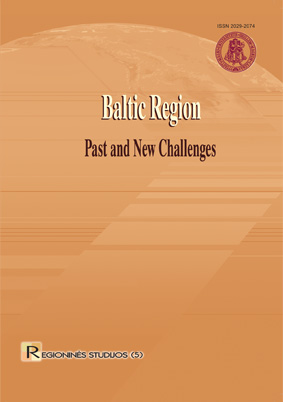The Russian Population in Tallinn, Recent Evolutions and The Building of the Bicultural City
The Russian Population in Tallinn, Recent Evolutions and The Building of the Bicultural City
Author(s): Vincent DautancourtSubject(s): Essay|Book Review |Scientific Life
Published by: Vytauto Didžiojo Universitetas
Keywords: Estonia; Tallinn; inter-ethnic relations; Russian minorities; elections; Estija; Talinas; tarpetniniai santykiai; rusų tautinės mažumos; rinkimai
Summary/Abstract: The Russian populations of Estonia live mostly in north-eastern Estonia and the capital Tallinn. As the Russian-speakers represent 43 % of the city inhabitants, the situation is particular in Estonia: contacts between Estonians and Russians may be easier than elsewhere in the country. The statistical data show a concentration of those populations in several districts including the district of Lasnamäe, built during the Soviet period. However, new trends reveal that the proportion of Russians increases in recent years in districts which had been mainly Estonian. The decision of Russian families to live in individual houses, like in the district of Pirita implies that inter-ethnic contacts could be better. However, the example of the location of schools in Tallinn reveals that even if the families move to other places, the relations may remain the same between Estonians and Russians. However, the analysis of the recent local and national elections that the Russian populations are well integrated regarding political issues. The elections in October 2009 reinforced the relations between the Russian populations and the Center Party, led by Mayor of Tallinn Edgar Savisaar and the absence of Russian parties in Estonia. Finally, the integration in the Estonian political life is real since the Estonian parties struggled to gather votes from the Russian populations of Tallinn, which essential to claim victory. Rusų tautinė mažuma Estijoje daugiausia gyvena šiaurės rytuose ir sostinėje Taline. Rusiškai kalbantys Talino gyventojai sudaro 43 proc., todėl kontaktai tarp estų ir rusų čia yra dažnesni nei kitose šalies vietose. Statistiniai duomenys rodo, kad rusų tautinė mažuma yra susitelkusi tam tikrose Estijos dalyse, įskaitant ir Lasnamę, sukurtą sovietmečiu. Tačiau esama naujų tendencijų, kad pastaraisiais metais rusakalbių gyventojų daugėja estiškai kalbančiose vietovėse. Rusų šeimų sprendimas gyventi nuosavų namų kvartale (kaip Piritos atveju) liudija, kad etninių grupių kontaktai gali būti geresni. Tačiau mokyklų išsidėstymas Taline rodo, kad, net šeimoms persikėlus gyventi kitur, santykiai tarp estų ir rusų gali likti tokie patys. Vietinių ir nacionalinių rinkimų rezultatų analizė atskleidė, kad politikos srityje rusų tautinė mažuma yra gerai integravusis. 2009 metų spalio rinkimai atnaujino ryšius tarp rusų tautinės mažumos ir Centro partijos, vadovaujamos Talino mero Edgaro Savisaaro, ir parodė, kad Estijoje nėra rusų partijų. Tad rusų tautinės mažumos integracija politinėje sferoje yra gana pozityvi, kadangi rinkimų Taline metu estų partijos varžėsi dėl rusų balsų, būtinų pasiekti pergalei.
Journal: Regioninės studijos
- Issue Year: 2010
- Issue No: 5
- Page Range: 39-51
- Page Count: 13
- Language: English

